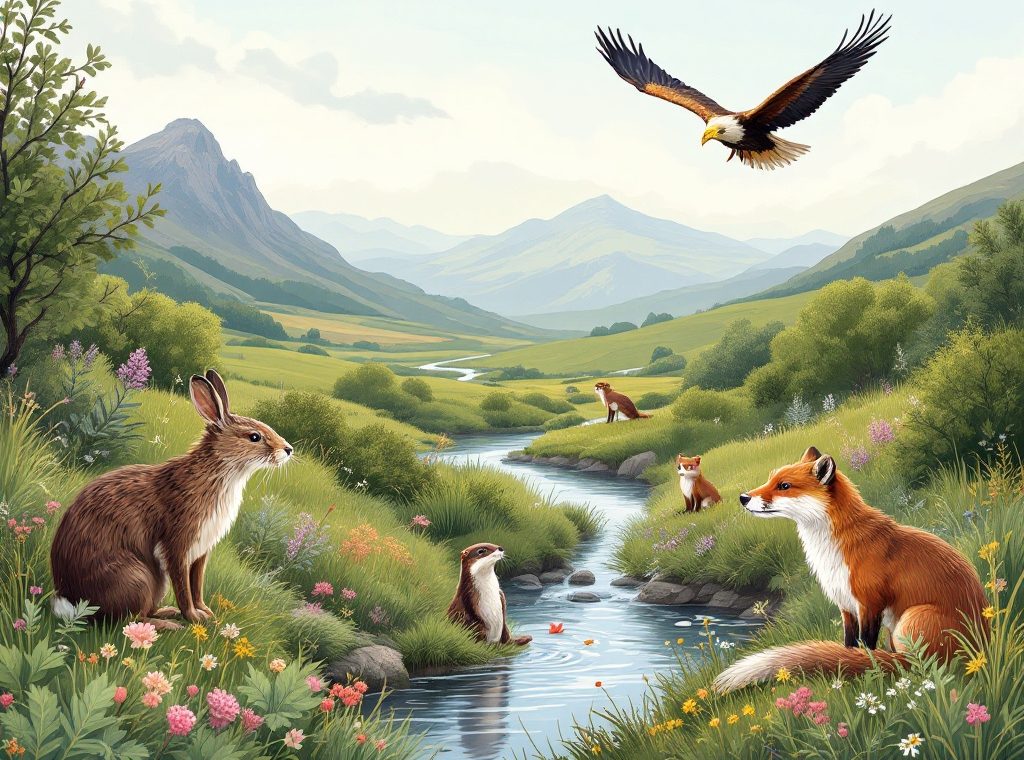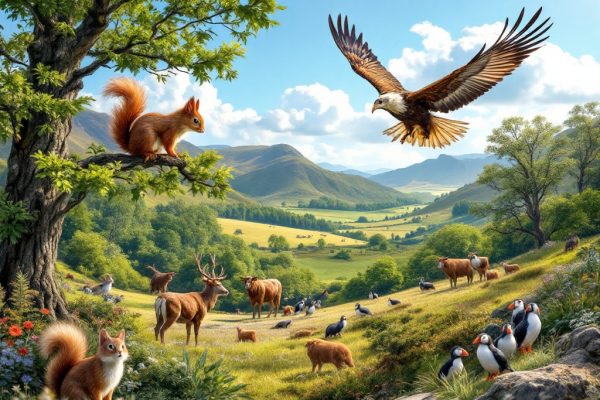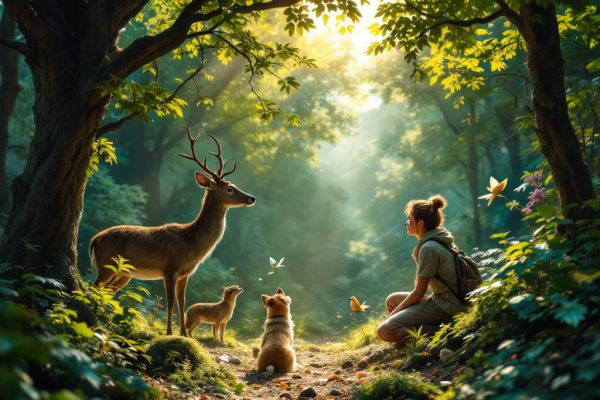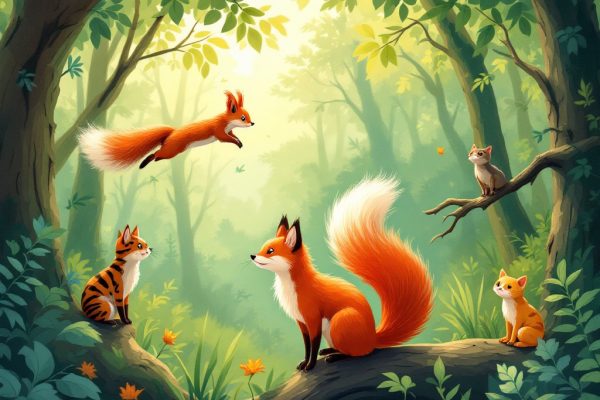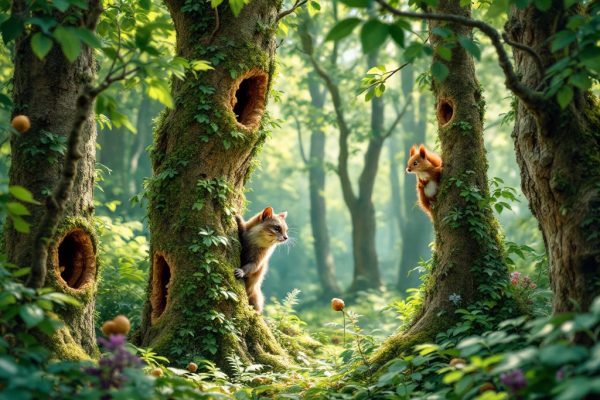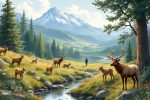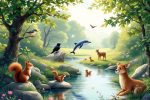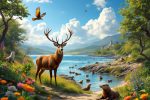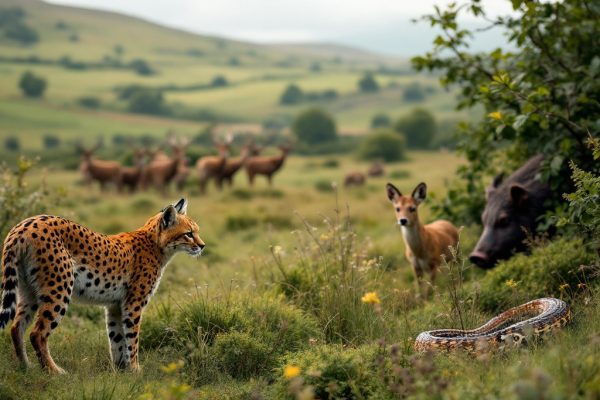What Do Lothian Wild Animals Eat?
Discover the fascinating world of Lothian’s wildlife and their diverse diets! From mountain hares grazing on heather to golden eagles soaring for rabbits, explore the unique feeding habits of these amazing creatures. Learn how otters hunt for fish, pine martens enjoy varied meals, and foxes adapt their diets. Uncover the secrets of Lothian’s ecosystem and its captivating wildlife. Dive in now and explore the wonders of nature!
Important information
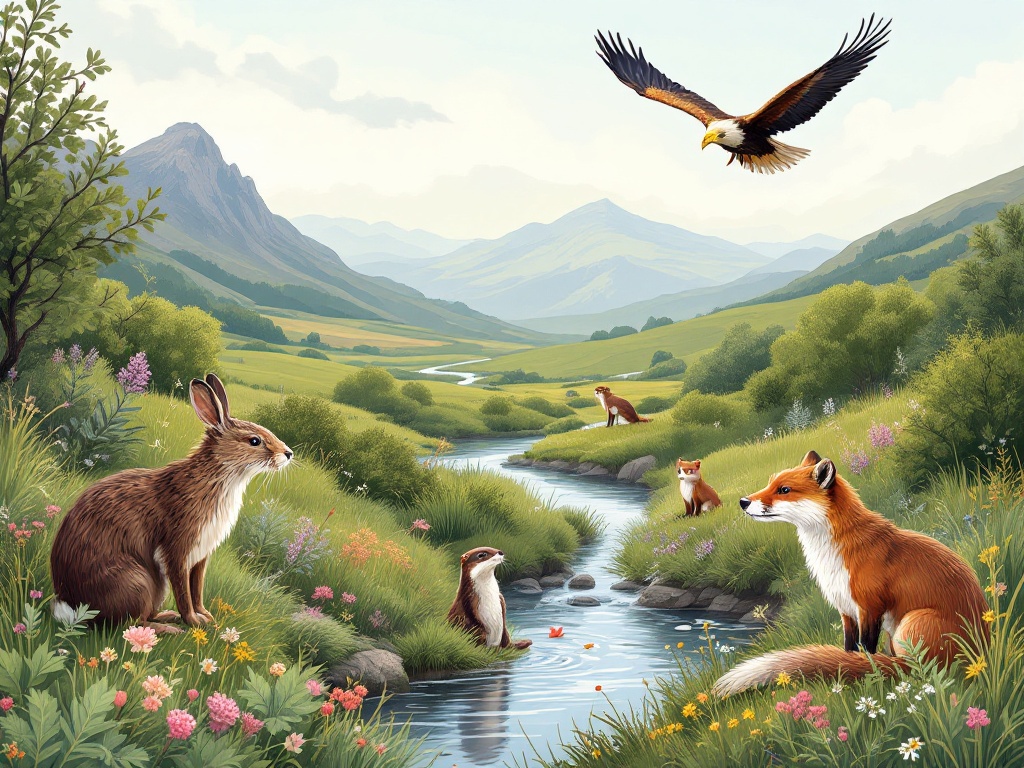
- Mountain hares are herbivores, feeding on heather, grasses, and sedge.
- Otters are carnivores, eating fish and small land animals.
- Pine martens have a diverse carnivorous diet, including small mammals, birds, insects, and fruit.
- Grey seals mainly eat fish but also consume invertebrates like squid and crabs.
- Basking sharks filter feed on zooplankton and small fish.
What Do Lothian Wild Animals Eat?
Lothian boasts diverse wildlife with fascinating feeding habits. Mountain hares graze on local flora, including heather, grasses, and sedge. Brown hares also enjoy a plant-based diet of grasses and other vegetation. Semi-aquatic otters favor fish and small terrestrial creatures. Skilled carnivores, pine martens, consume a varied diet, while foxes hunt a broad spectrum of prey under the cover of night.
Dietary Preferences of Mammals
Mountain hares are herbivores, happily munching on heather, grasses, and sedge.
Brown hares share similar tastes, grazing on various plants.
Otters, in contrast, are carnivores, with a penchant for small fish and land-dwelling creatures.
Pine martens also favor meat, enjoying a diverse carnivorous diet.
The nocturnal habits of foxes make their feeding patterns more elusive.
Mountain Hares: Heather, Grasses, and Sedge
Mountain hares are herbivores, thriving on moorland plants like heather, grasses, and sedge. This readily available food source provides all the necessary nutrients for their survival in the Lothian region.
Brown Hares: Range of Grasses and Vegetation
Lothian’s brown hares primarily graze on grasses, but their diet also includes herbs, clover, and occasionally bark. This varied diet enables them to thrive in Lothian’s diverse habitats and adapt to environmental changes.
Otters: Small Fish and Land Creatures
Otters love to eat fish, especially trout, salmon, and eels. They also enjoy frogs, crabs, and crayfish. If their favorite fish aren’t around, otters will eat almost anything.
Pine Martens: Diverse Carnivorous Diet
The pine marten, a carnivorous mammal, thrives in Lothian thanks to its diverse diet. Small mammals like voles, mice, squirrels, and rabbits form the core of their food intake. They also prey on birds and their eggs, insects, and carrion. Fruits and berries supplement their diet, particularly when other food sources are scarce.
Foxes: Nocturnal Feeding Habits
Lothian foxes are nocturnal hunters, primarily preying on small mammals like mice, voles, and rabbits. Their diet is surprisingly diverse and also includes birds, insects, and fruits. These opportunistic scavengers will eat almost anything they find.
Specific Animal Diets and Feeding Habits
Red deer graze on grasses and heather, supplementing their diet with tree bark.
Beavers, those large rodents, gnaw on bark and twigs, adding leaves and aquatic plants to their meals.
Reindeer graze on grasses, herbs, and lichen.
Red squirrels relish seeds and nuts, but also enjoy berries and fungi.
Wild pigs will eat almost anything, from roots and fruits to insects and even small animals.
Red Deer: Herbivorous Diet
Lothian’s red deer are herbivores, grazing mainly on grasses, but their diet varies with the seasons. They also consume leaves, shrubs, fruits, shoots, twigs, and bark.
Red Squirrels: Seeds, Nuts, and Berries
Red squirrels flourish in Lothian’s forests due to their diverse diet. They primarily consume conifer seeds, hazelnuts, and acorns. Berries, fungi, and tree buds supplement their main food sources. Occasionally, they also eat insects and bird eggs. This varied diet provides the squirrels with essential energy and nutrients for their active lifestyle.
Beavers: Bark, Twigs, and Aquatic Plants
Beavers have a strong affinity for trees, particularly willow, aspen, and birch, savoring their bark and twigs. Their diet also includes aquatic plants like water lilies and pondweed, providing the necessary energy for constructing their remarkable dams.
Wild Pigs: Omnivorous Preferences
Lothian’s wild pigs are opportunistic omnivores, consuming a diverse range of foods. Their diet includes plant matter such as roots, fruits, nuts, and seeds. They also consume small mammals, insects, and even carrion. This adaptability allows them to thrive in a variety of habitats.
Reindeer: Grasses and Lichen
Reindeer are herbivores, grazing primarily on grasses. Lichen supplements their diet, becoming especially crucial during the winter. This specialized diet allows them to flourish in the harsh tundra and arctic climates.
Birds of Prey and Their Diets
Golden Eagle
Golden eagles are skilled hunters, primarily targeting medium-sized mammals like rabbits and hares. Their diet also includes birds, such as grouse.
Buzzard
Buzzards are opportunistic feeders, consuming carrion as a significant part of their diet. They also supplement this with earthworms and small mammals, including mice and voles. A buzzard’s diet ultimately depends on food availability.
Golden Eagles: Medium-Sized Mammals and Birds
Golden eagles are apex predators, hunting medium-sized mammals like rabbits and birds such as grouse. Their position at the top of the food chain highlights their important role in the ecosystem.
Buzzards: Carrion and Earthworms
Buzzards play a vital role in maintaining a healthy ecosystem. Their diet, consisting mainly of carrion and earthworms, helps keep the environment clean and balanced. By consuming dead animals, such as rabbits, buzzards prevent the spread of diseases and minimize the effects of decomposition on other organisms. Earthworms are also a significant part of their diet.
Feeding Patterns of Wild Birds
Bird diets vary significantly depending on their habitat. Moorland birds, like grouse and meadow pipits, thrive on seeds, berries, and insects. Forest birds, including woodpeckers, tits, and treecreepers, search for insects, nuts, and seeds in trees and on the ground. Coastal birds, such as gulls, terns, and oystercatchers, prefer crustaceans, mollusks, and fish found along shorelines. This highlights how birds adapt to the food sources in their environment.
Foraging on Moors and in Forests
Moorland Birds
Moorland birds, like the red grouse and meadow pipit, have a simple diet. They primarily consume seeds, insects, and berries found in low-lying vegetation.
Forest Birds
Forest birds have a more diverse diet. For example, woodpeckers extract insects from trees. Chaffinches and tits search for seeds and invertebrates among branches and leaf litter. Some forest birds also eat nuts and fruits. Each species uses its unique foraging methods.
Feeding Habits of Nocturnal Species
Brown long-eared bats primarily feed on midges and moths, although they also consume other insects. These nocturnal hunters use echolocation, a sophisticated navigation system, to find their prey in the dark.
Brown Long-eared Bats: Midges, Moths, and Insects
Brown long-eared bats are specialists in hunting moths and midges, though their diet also includes other insects. These nocturnal creatures use echolocation to pinpoint prey mid-flight.
Marine Wildlife Diets in Lothian
Lothian’s grey seals primarily feast on fish like sandeels, cod, and herring, but also consume invertebrates such as squid, crabs, and lobsters. Basking sharks, the second-largest fish species, filter massive quantities of water for zooplankton and small fish. These gentle giants swim with their mouths open, sieving tiny prey from the ocean.
Grey Seals: Fish and Marine Invertebrates
Grey seals in the Lothian area maintain a diverse diet, primarily consisting of fish such as cod, sandeels, and herring. Their diet also includes marine invertebrates like squid, crabs, and octopus. As apex predators, they play a vital role in the local marine ecosystem.
Basking Sharks: Plankton and Small Fish
Basking sharks, gentle giants of the ocean, filter feed on tiny zooplankton, small fish, and invertebrates. They strain these organisms from the water using specialized gill rakers, a remarkably efficient filtering method.

